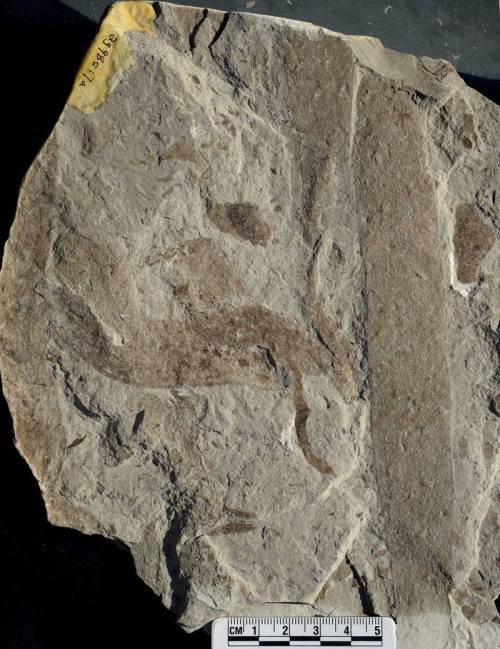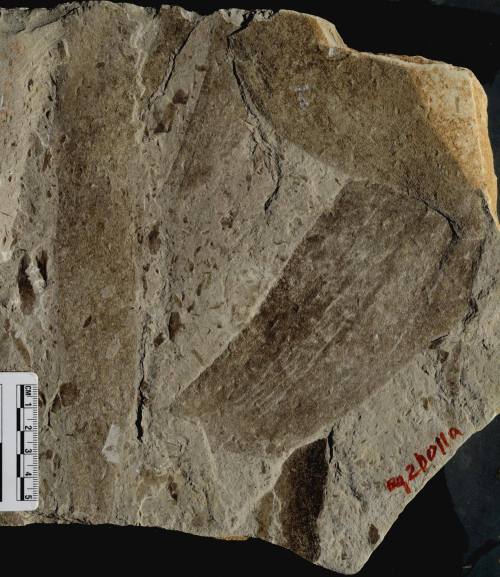The oldest large scale complex fossils?These unremarkable looking patterns preserved as thin films o
The oldest large scale complex fossils?These unremarkable looking patterns preserved as thin films of carbon are a touch over one and a half billion years old and represent the best evidence so far for multicellular creatures living on the sea bottom that long ago. Up until now the oldest fossils this big lived a full billion years afterwards just before the Cambrian explosion, known as the (somewhat puzzling) Ediacaran biota (see http://bit.ly/1BlFejb).Found in Hebei province in north China, they display both large sizes and regular, consistent shapes, growing up to 30cm long by 7.5 wide. The sediments in which they were preserved are of marine origin, and these organisms seem to have been benthic (bottom dwelling) in their ecological lifestyle. Several different types have been found, though the largest have ragged ends, suggesting that they are fragments of even larger beings. When the organics are separated by dissolving the rock out in acid well preserved sheets of cells appear.While earlier Eukaryotic (with cells containing the genetic material in a separate nucleus) fossils are known, these are the largest to date, and suggest not only a multicellular organism but a degree of differentiation in cell functions (implying that we are seeing an organism with a degree of complexity one step above the colonial (eg sponges)). They also suggest that it was probably able to photosynthesise.This discovery throws open many questions…if multicellular life evolved earlier than thought, why are their fossils so rare that they only emerge now? Were their numbers really low, or does it reflect some preservation process, in much the same way that early Cambrian fossils are better preserved than later ones due to the a relative absence of burrowing organisms to stir up the sediment. This is also thought to be the rough period when single celled eukaryotes first took symbiotic cyanobacteria on board, turning into the first plants…and you may be looking right at one of them.The finds, published in nature Communications, have of course sparked a strong debate with some hailing it as a major discovery and others sceptical that these are even fossils. Many also doubt that they are true eukaryotes, and suggest that bacterial colonies are a better explanation. However the undoubted presence of the Ediacaran creatures implies a long precursor evolutionary sequence from single cells through colonies to increasingly differentiated groups of cells each performing a function but now interdependent, as opposed to colonies which can be separated and survive. The dearth of fossils recording this stage in the process of the growth of life’s great bush may have just been broken by an intermediate find, and hopefully the 167 fossils found in the remnants of a long ago submarine mudslide so far will prove the tip of an informationally productive iceberg.Further study will be needed to evaluate the team’s claim, but one thing is sure, the so called ‘boring billion’ just got a whole lot more interesting.LozImage credit: ZHU Maoyanhttp://bit.ly/1svKqiwhttp://bit.ly/1UiJnP0Original paper, paywall access: http://go.nature.com/1YLT6LD -- source link
Tumblr Blog : the-earth-story.com
#fossil#precambrian#geology#fossilfriday#china#eukaryote#multicellular#ediacaran#limestone#nature#landscape#science#carbon

